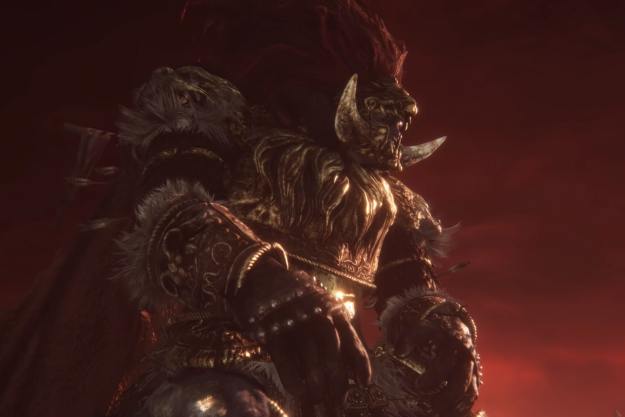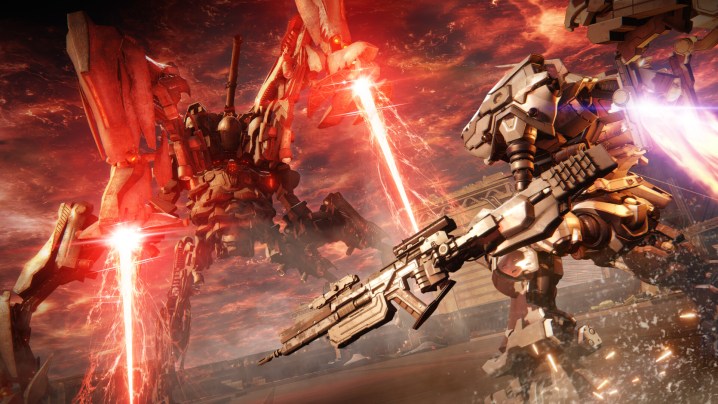
I don’t envy the position FromSoftware is in with Armored Core VI: Fires of Rubicon. It’s the first title since the release of Elden Ring, a monumental, critically acclaimed title considered one of the studio’s best. It’s also reviving a series that hasn’t been seen in a decade for modern platforms and game audiences. On top of those things, because this isn’t a Souls game, a microscope will be on the title as FromSoftware fans scrutinize if it’s as good as other games, while Souls haters will wonder if this is finally a good FromSoftware jumping on point for them.
Well, after getting a hands-off, behind-closed-doors look at the game during Summer Game Fest Play Days, I think Armored Core VI has a very good chance of living up to all those lofty expectations. It looks like a fast-paced, explosive, and customization-heavy mecha experience that should serve as a nice change of pace for FromSoftware, where we can see the studio’s excellent level and boss design applied in a different gaming genre context.
A grand return
My hands-off Armored Core VI demo started with FromSoftware detailing this series’ history and its vision for this new game. Essentially, the studio wants to bring the design sensibilities for game feel and level construction that it has gained working on games like Dark Souls, Sekiro: Shadows Die Twice, and Elden Ring to a new Armored Core title. This pushed the team to create expansive levels where players can rocket around in their mechs, give players lots of gameplay customization options, and design challenging encounters that would provide players with a sense of accomplishment after taking down tough enemies.
After that high-level overview and a look at some of the massive map environments, I finally got to see the game played by a developer in the room. It was set at the Central Ice Field, where the player is trying to take control of the Grid 086 facility. Looking at this level, I was impressed by its intimidating scope, with a massive mechanical structure piercing the icy tundra below. Gameplay then started, and I saw the demoist boost forward at high speed with the rockets on his mech, going deeper into the facility’s interior.
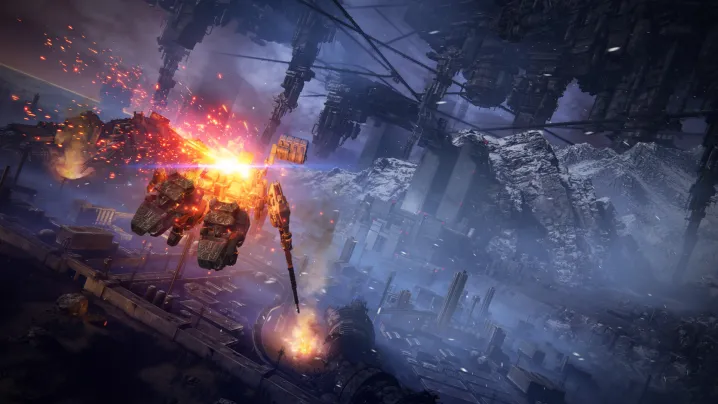
If you think Sekiro and Bloodborne are fast, this action was happening at a speed unlike any other modern FromSoftware game. Players can boost in any direction, opening up many exploration and combat opportunities. FromSoftware showed how advantageous it was to attack enemies from above multiple times, but also showed at one point how the player’s mobility gives them more options to approach a situation.
You can fly right into the action, fight from a distance, or maybe fly around until you find a path that’ll put you in a good starting position for a fight. Armored Core VI is still level-based, but in that way, it seems like it retains a bit of the open-world spirit of Elden Ring. That player-driven variety looks like it will apply during combat, too. The developer playing engaged enemies shortly thereafter and showed off the various weapons they had equipped as they quickly rocketed around enemies to dodge their attacks and deal a ton of damage back, occasionally staggering enemies to do even more damage.
It seems like the FromSoftware formula of analyzing and learning from enemy patterns will be retained in Armored Core VI. That said, the way players fight enemies leans all the way into its mecha action, with only the occasional melee attack helping out depending on the weapons the player has equipped. I found the UI during gameplay to be a little too crowded during this hands-off presentation, but there’s a lot of information the game has to let the player know about. The information displayed includes player health, weapons, and boost energy left, not to mention the target lock-on system or scanning that lets players scout ahead and see what enemies are present.
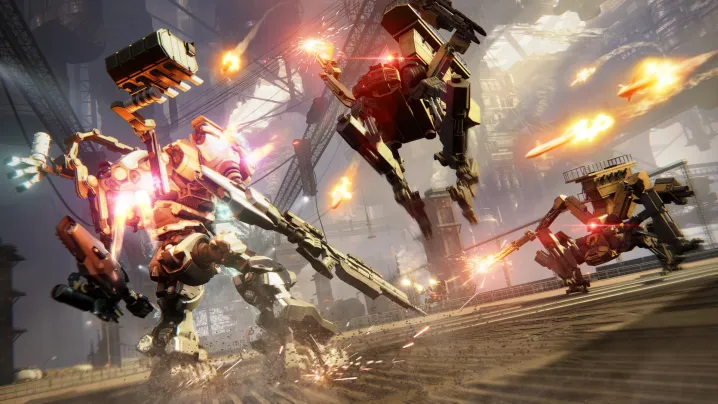
After some more intense battles, the FromSoftware developer playing intentionally died to an enemy. This gave them a chance to highlight the deep mech customization system. In this menu, I saw at least 12 different internal and external parts that players can customize to modify the abilities and weapons at the mech’s disposal. After equipping some new weapons, the developer hopped back into the fight, won, and carried on.
The short developer-driven playthrough culminated in a boss fight, where a massive, raging mech with what looked like a giant furnace on its back attacked the demoist. FromSoftware is the king of boss visual and gameplay design, and it doesn’t look like that will change in Armored Core VI. Unfortunately, the hands-off presentation of Armored Core VI ended here, and I was left wishing it hadn’t. I’m aware of the pressure and lofty expectations this game will go up against when it comes out, but I think it has a shot at living up to all of them.
It was hard to get a sense of the game’s difficulty of newcomers of Souls haters because a developer was playing and only intentionally died at one point. However, the automatic checkpoints and ability to change your mech’s loadout between deaths are certainly helpful. It won’t be as innovative as Elden Ring felt, but it will retain some of that sense of player exploration and experimentation.
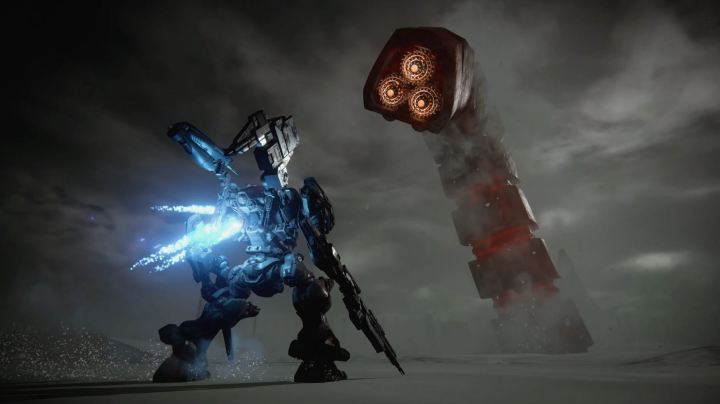
I can’t wait to go hands-on with the final version of the game and affirm all of these things for myself, as this hands-off presentation was awe-inspiring. And ultimately, that is what will truly make or break the return of Armored Core: what FromSoftware’s most die-hard fans and other interested players think when they can finally play the game. Thankfully, we won’t have to wait too long for that.
Armored Core VI: Fires of Rubicon will be released for PC, PS4, PS5, Xbox One, and Xbox Series X/S on August 25.
Editors' Recommendations
- Summer Game Fest: our 10 favorite games we saw and played
- Armored Core VI: Fires of Rubicon follows up Elden Ring in August
- Elden Ring’s first significant post-launch content is a PvP Colosseum
- Sony and Tencent now own 30% of FromSoftware through stock purchase
- Elden Ring is far from perfect, and Demon’s Souls helped me see why



